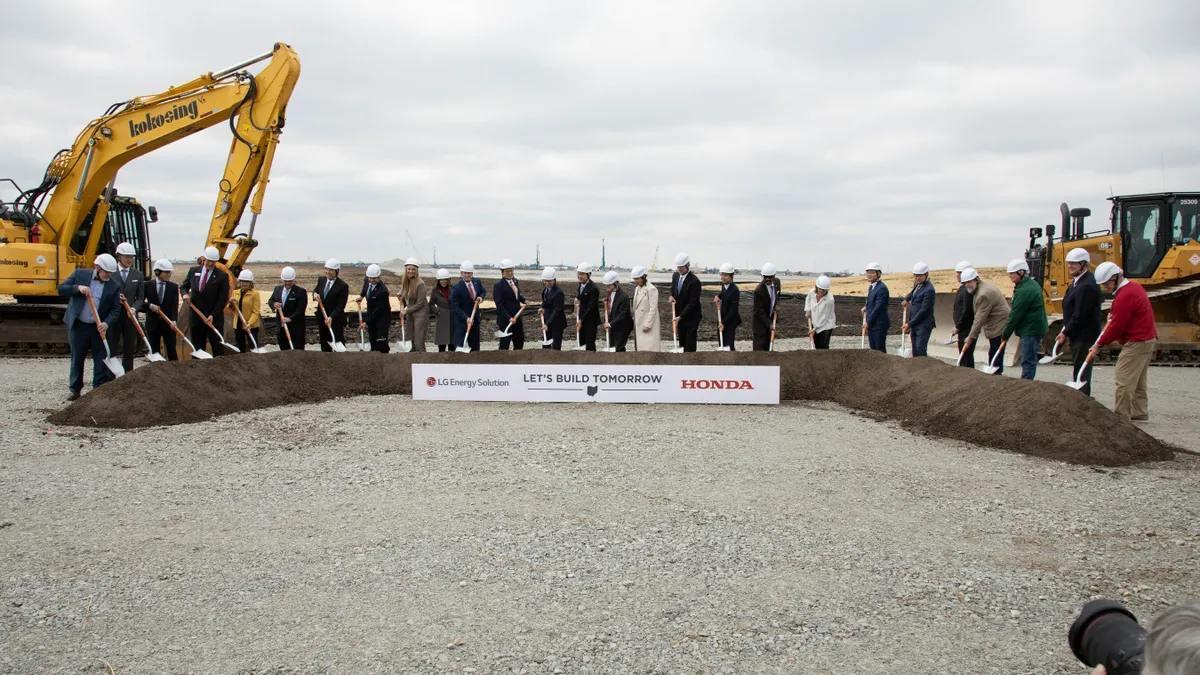Dive Brief:
- Total construction starts rebounded in February to a seasonally adjusted annual rate of $912.8 billion, a 6% rise, due to bustling building activity for manufacturing plants and homes, according to Dodge Construction Network. But after a massive dropoff in January, starts for the first two months of the year were still 17% below their 2022 levels and weakness in the commercial and institutional sectors pose cause for concern.
- Residential and nonresidential building starts jumped 11% and 9% in February, as single family homes posted their first gain in 13 months. Nonbuilding starts, which include infrastructure projects, declined 5%. While overall year-to-date numbers were down, for the 12 months ending in February 2023, total construction starts moved 9% higher than the previous year, according to the report.
- “February construction starts were a mixed bag that led to marginal growth,” said Richard Branch, chief economist for Dodge Construction Network, in the report. “Manufacturing starts continued to be very robust, showing signs of promise early into 2023. However, the downturn in commercial and institutional building starts could very well be the beginning of an anticipated slow-down.”
Dive Insight:
Residential building starts rose in February to a seasonally adjusted annual rate of $320 billion. Single-family and multifamily starts jumped 4% and 22%, respectively. The largest multifamily structures to break ground in February were:
- A $350 million mixed-use building in New York.
- The $215 million Four Seasons condominium in Washington, D.C.
- The $140 million Palomar Heights mixed-use building in Escondido, California.
Meanwhile, manufacturing starts ballooned 218% in February, largely due to the start of a $3.5 billion Honda EV battery plant in Jeffersonville, Ohio. Nonresidential building starts, boosted by manufacturing activity, increased in February to a seasonally adjusted annual rate of $368 billion, according to the report. The largest nonresidential building projects to break ground in February were:
- The $3.5 billion Honda EV battery plant in Jeffersonville, Ohio.
- The $1.4 billion expansion of Concourse D at Hartsfield Jackson Airport in Atlanta, Georgia.
- The $500 million Apex-1 Sustainable Lithium-Ion battery plant in Hopkinsville, Kentucky.
Signs of weakness
But the downturn in commercial and institutional building starts could mark the beginning of an anticipated slowdown as the construction sector grapples with both higher interest rates and weak economic growth, said Branch.
“While this ebbing should be comparatively mild, some construction verticals could face extreme stress as the year progresses,” Branch said.
For example, commercial starts decreased 2% in February due to a drop in office and parking structure starts. That offset gains in retail, hotels and warehouse activity, according to the report. Institutional starts also tumbled in February, caused by a decline in education and healthcare projects.
Likewise, nonbuilding construction starts fell in February to a seasonally adjusted annual rate of $225 billion due to a 30% decline in environmental public works starts and a 5% loss in highway and bridge starts, according to Dodge.
On the other hand, utility and gas plant starts jumped 68% in February, while miscellaneous public works starts also inched 6% higher, according to Dodge. The largest nonbuilding projects to break ground in February include:
- The $1.2 billion Trumbull Energy Center in Warren, Ohio.
- The $540 million Merit SI Gulfstar solar farm in Wharton County, Texas.
- The $530 million Mockingbird Solar Center in Brookston, Texas.















